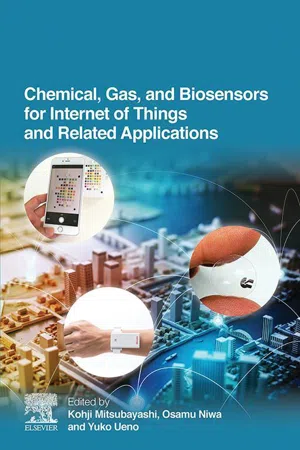
Chemical, Gas, and Biosensors for Internet of Things and Related Applications
- 406 pages
- English
- ePUB (mobile friendly)
- Available on iOS & Android
Chemical, Gas, and Biosensors for Internet of Things and Related Applications
About This Book
Chemical, Gas, and Biosensors for the Internet of Things and Related Applications brings together the fields of sensors and analytical chemistry, devices and machines, and network and information technology. This thorough resource enables researchers to effectively collaborate to advance this rapidly expanding, interdisciplinary area of study. As innovative developments in the Internet of Things (IoT) continue to open new possibilities for quality of life improvement, sensor technology must keep pace, Drs. Mitsubayashi, Niwa and Ueno have brought together the top minds in their respective fields to provide the latest information on the numerous uses of this technology.
Topics covered include life-assist systems, network monitoring with portable environmental sensors, wireless livestock health monitoring, point-of-care health monitoring, organic electronics and bio-batteries, and more.
- 2020 PROSE Awards - Winner: Category: Chemistry and Physics: Association of American Publishers
- Describes the latest advances and underlying principles of sensors used in biomedicine, healthcare, biotechnology, nanotechnology and food and environment safety
- Focuses on sensors' methods of data communication, logging and analysis for IoT applications
- Explains the specific requirements of sensor design and performance improvement, helping researchers enhance sensitivity, selectivity, stability, reproducibility and response time
Frequently asked questions
Information
Portable urine glucose sensor
Abstract
Keywords
1.1 Introduction
1.2 Significance of urine glucose measurement

1.3 Operating principle of urine glucose sensor and laminated structure
1.3.1 Principle of operation
- 1. Enzymatic reaction
GOX: Glucose+O2→gluconolactone+H2O2 - 2. Electrochemical reactions at electrodes
Working electrode: H2O2→2H++O2+2e−
Counter electrode: 2H+ +1/2O2+2e−→H2O
Entire electrode system: H2O2→H2O+1/2O2
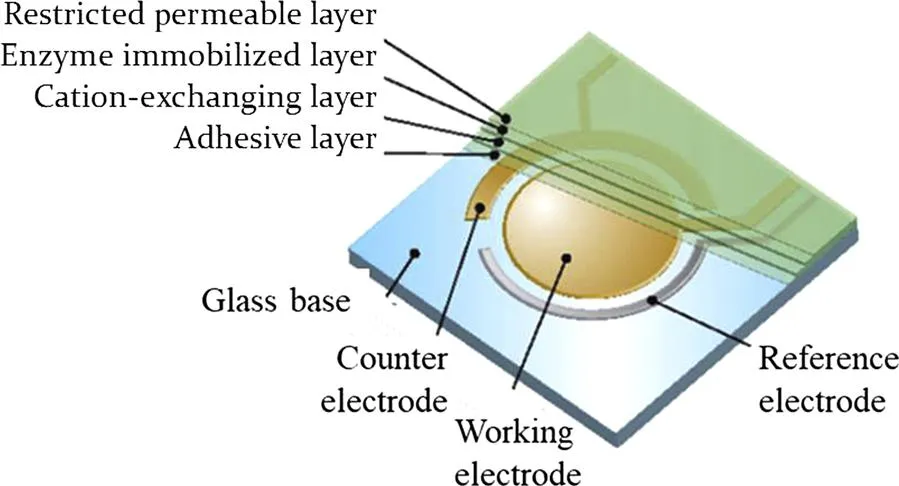
1.3.2 Laminated structure of urine glucose sensor
- 1. The restricted permeable layer has a wide measurement range from 10 to 2000 mg/dL, limiting the diffusion of molecules larger than glucose. It has the role of preventing the influence of adhered substances in urine.
- 2. The enzyme immobilized layer is the one where enzyme (GOX) and bovine serum albumin are crosslinked and immobilized so as not to inactivate the enzyme; as a result, repetition of the sensor is possible.
- 3. The cation-exchanging layer has the role of permeating hydrogen peroxide and limiting the diffusion of molecules larger than hydrogen peroxide. Furthermore, it has the function of preventing permeation of ionized molecules.
- 4. The adhesive layer has the role of covalently bonding the selectively permeable film, which is an organic material, to the surface of the glass substrate or the electrode and stably adhering for a long time in water.
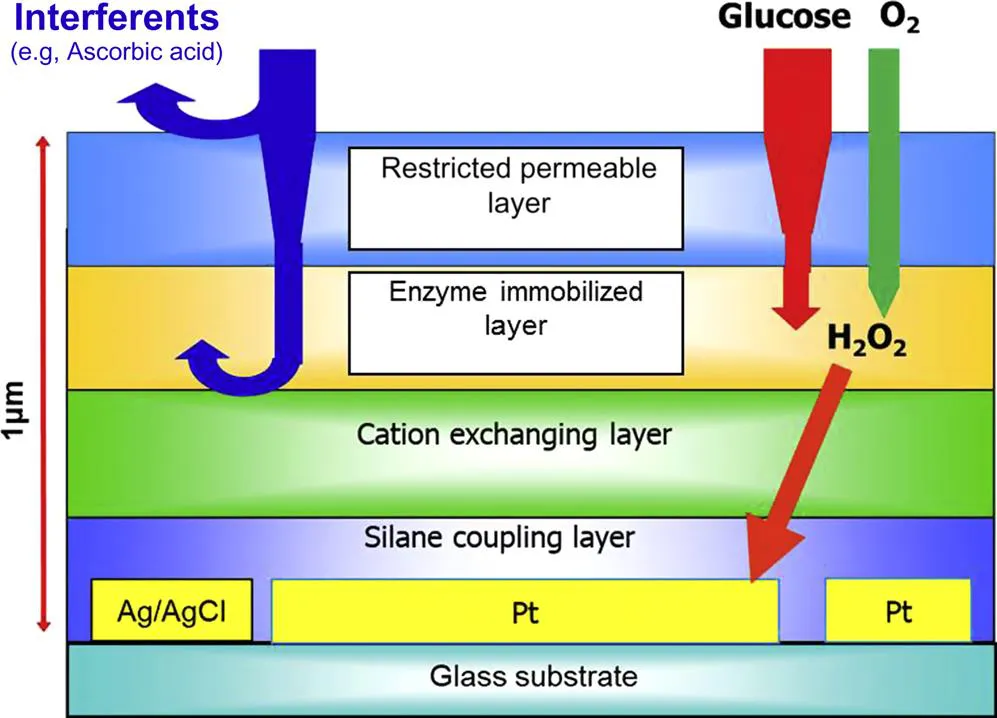
1.4 Development of portable urine glucose meter
1.4.1 Composition of urine glucose meter
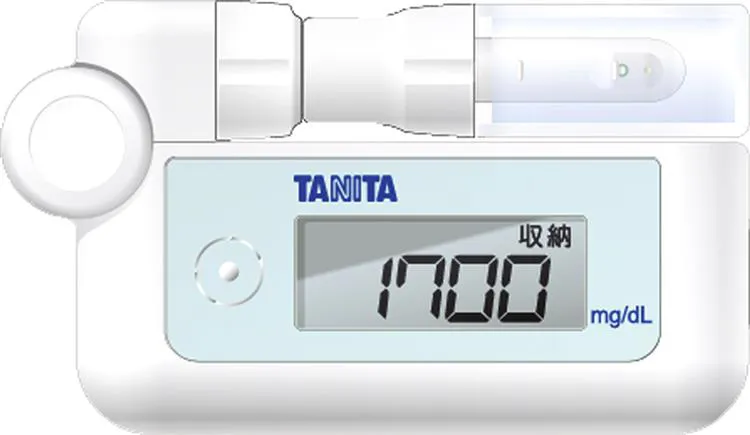
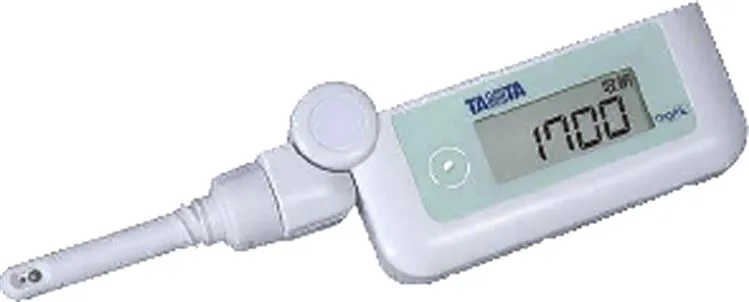
Table of contents
- Cover image
- Title page
- Table of Contents
- Copyright
- List of Contributors
- Preface
- Part I: Sensors and Devices for Internet of Things Applications
- Part II: Flexible, Wearable, and Mobile Sensors and Related Technologies
- Part III: Information and Network Technologies for Sensor-Internet of Things Applications
- Summary and future issues
- Index